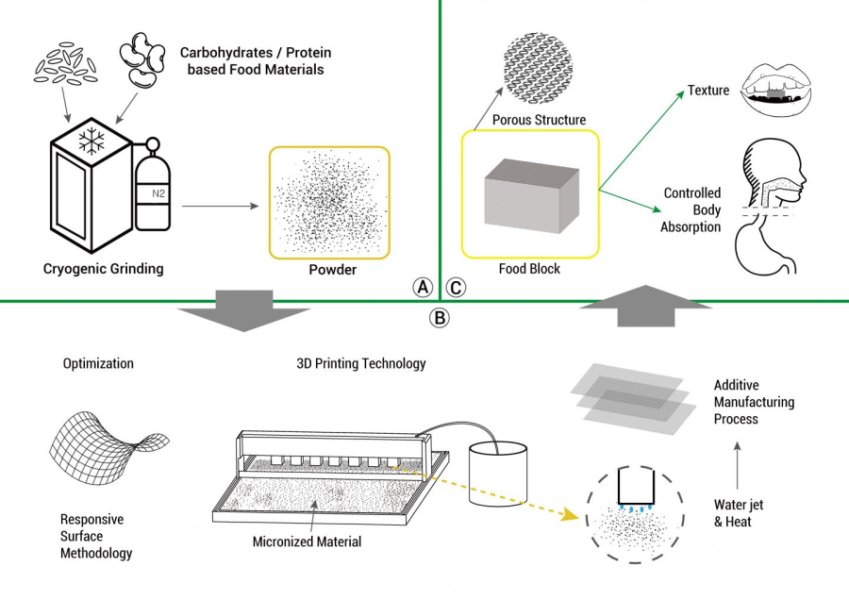RESEARCH on how 3D printing can be used to customise food according to one’s nutritional needs was among presentations at the American Society for Biochemistry and Molecular Biology annual meeting, during the 2018 Experimental Biology meeting held from April 21-25 in San Diego, USA.
Jin-Kyu Rhee, associate professor at Ewha Womans University in South Korea said, “We built a platform that uses 3-D printing to create food microstructures that allow food texture and body absorption to be customised on a personal level,” said Rhee. “We think that one day, people could have cartridges that contain powdered versions of various ingredients that would be put together using 3-D printing and cooked according to the user’s needs or preferences.”
Reduced food waste and other benefits
In 3D printing, layers of raw material are deposited to build up a final product. The ability to 3-D print food at home or on an industrial scale could reduce food waste and the cost involved with storage and transportation. It might also help meet the rapidly increasing food needs of a growing world population.

A: Food materials are pulverised under ultra-low temperature close to -100 degrees Celsius. B: Micro-sized food materials are reconstructed into a porous film-shaped material by jetting bonding an agent under optimised water content and heat conditions. The process to build film-type materials is repeated layer by layer to form to a three-dimensional food block. C: The exterior of foods and internal microstructure of a food block with specific porosity is designed to give texture with controlled human body absorption while eating and ingesting. (Photo credit: Jin-Kyu Rhee, Ewha Womans University)
For the new study, the researchers used a prototype 3-D printer to create food with microstructures that replicated the physical properties and nanoscale texture they observed in actual food samples. They also demonstrated that their platform and optimised methods can turn carbohydrate and protein powers into food with microstructures that can be tuned to control food texture and how the food is absorbed by the body.
“We are only in early stages, but we believe our research will move 3-D food printing to the next level," said Rhee. “We are continuing to optimise our 3-D print technology to create customised food materials and products that exhibit longer storage times and enhanced functionality in terms of body absorption. - Source: Experimental Biology
Air Jordan XI 11 Wool













